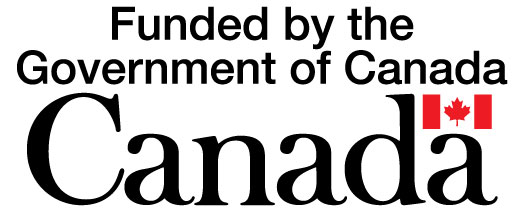Current Temperature
10.4°C
MP salaries frowned upon by a majority of Canadians
Posted on April 10, 2025 by Vauxhall AdvanceBy Cal Braid
Vauxhall Advance
Local Journalism Initiative Reporter
With the federal election at hand, voters are taking a closer look at the candidates within their ridings. For every voter, the candidate they select at the ballot box will be the one who represents their best interests both locally and in Ottawa. On top of that, each vote will be a stamp of approval for that candidate’s taxpayer-supported, six-figure salary. For some voters, that’s a tough pill to swallow and a reason to raise the bar for their political expectations.
Polling agency Leger released a report in March showing that 80 per cent of polled Canadian residents aged 18-plus rejected the notion that MPs should be given a pay raise in April 2025. That’s eight of every ten across the 1,548 poll respondents.
For background, Leger looked at the trend of government salaries. It noted, ”Since the beginning of 2020, members of Parliament have received five pay raises – one per year. A backbench MP now receives an annual salary of $203,100, while the prime minister’s annual salary is $406,200.”
“All MPs are set to receive another raise in April. Do you support or oppose MPs receiving another raise on April 1?” Leger’s poll asked. It said the prime minister’s total wage is often a combination of two salaries, one for his PM role, and one for his MP duties. MPs were set to receive an extra $6,700 per year starting this month, pushing their yearly salaries to $209,800.
The poll results? “While 20 per cent only somewhat oppose the raise MPs are set to receive on April 1, 59 per cent are strongly opposed, particularly those aged 35 plus, living outside Quebec, and living in rural communities.”
The poll found that 62 per cent of White individuals strongly opposed the raise, versus 49 per cent of those who identify as Black, Indigenous, and people of colour (BIPOC). On the opposite end of the spectrum, “men, younger Canadians aged 18 to 34, Quebecers, those in urban or suburban areas, and BIPOC individuals supported the proposed raise in salary for MPs.”
Leger additionally noted, “When those who are ‘unsure’ are removed, 86 per cent of Canadians oppose a raise.” The poll numbers can be considered significant because many statisticians agree that in a larger population, an ideal sample size is 1,000. Leger’s sample size exceeds that.
The Our Commons ‘Members Allowances and Services’ manual updated on April 1 is a 336- page online document that includes nearly every imaginable detail of the rules, rights, and privileges afforded to Canadian MPs. Salaries and benefits, budgets, expenses, travel and much more are covered within it. It covers the new salary rates and says, “Additionally, members who hold certain offices and positions are entitled to additional salaries in accordance with the Parliament of Canada Act.”
Members receive health, dental, pension, disability, and life insurance plans. In addition, travel entitlements for “Members and their authorized travellers” cover their Parliamentary functions, though travellers are required to take the most direct route and the safest, most economical, and practical means of travel.
“Members are in travel status when they are at least 100 kilometres from their primary residence and travelling: between Ottawa and their constituency; within their constituency, or the province or territory in which their constituency is located; within the National Capital Region (NCR)…or in and between Washington D.C. or New York City and Ottawa or their constituency,” the document specifies.
MPs are allowed a per diem during travel. Rates for the US are the same as the ones for the provinces (not including Alaska, which has the same rate as the Yukon).
Effective April 1, the per diem rate in Canada/US is as follows: breakfast $28.40; lunch $27.40; dinner $57.70; and incidentals $17.30. Total: $130.80. Northern per diems are significantly higher.
At any time during their continuous mandate, or within a year of it expiring, Members can relocate one time between the NCR and their constituency. Campers, snowmobiles, racing cars, and any other vehicle or boat with a rating of three-quarter tons do not qualify for moving reimbursements, but almost everything else does.
An MP’s federal benefits also include “confidential and voluntary counselling services on a broad range of topics such as personal, family, financial, legal, professional, addiction, lifestyle, nutrition, health and wellness matters.” The services are free and available to Members, their spouses, their dependents, and their employees.
Each fiscal year on April 1, MPs are allocated a Member’s Office Budget (MOB). The annual budget provides Members with funds to pay employee salaries, service contracts, wireless devices, professional development and other expenses.
However, “Members…are personally responsible for paying expenditures exceeding their budget,” the document states. Remote constituencies may receive a supplementary budget.
The basic Member’s Office Budget for the 2025-2026 fiscal year is set at $429,600 for all constituencies. GST, HST, and QST do not impact the MOB; they are charged to an account and are recovered from the Government of Canada by the House of Commons.
With all that and more on the table, MP candidates will be on the edge of their seats on election night and not merely because pride, prestige, and power are at stake – but also because it offers perks that far exceed the ones received by the roughly 80 per cent of Canadians who make under $100K. Go back to the Leger poll and that 80 per cent figure falls right in line with its findings.
Leave a Reply
You must be logged in to post a comment.

 Log In
Log In